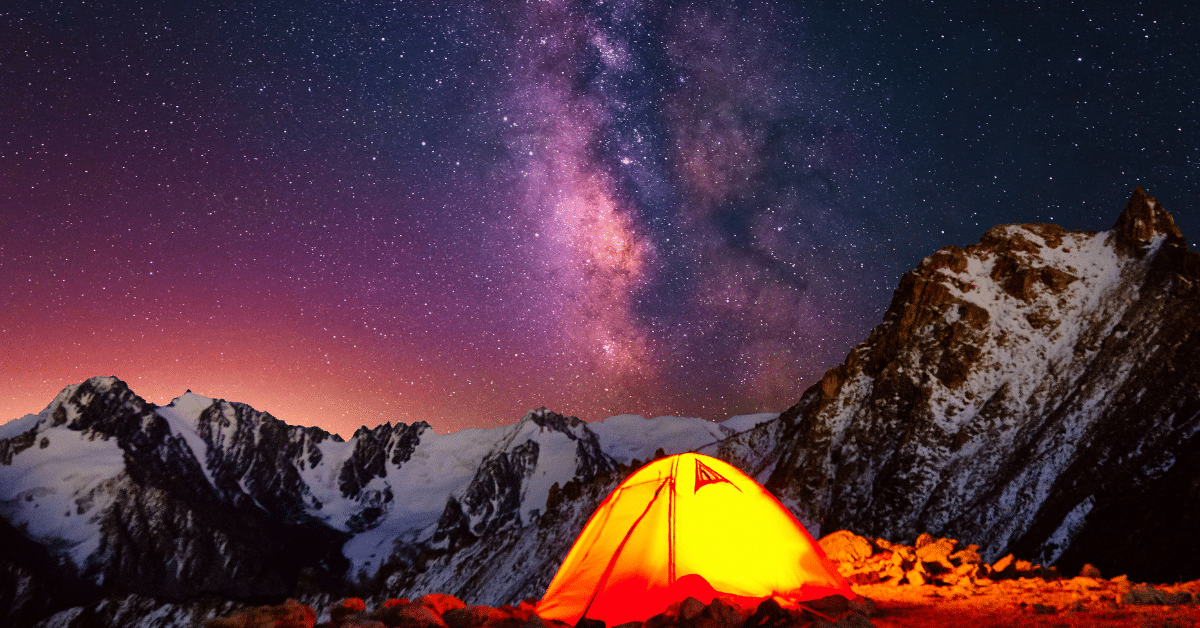If science and spirituality have ever agreed on anything, it’s that our universe began as pure nothingness.
The Bible calls this nothingness a formless void.
Taoists believe that it was what existed before yin and yang.
Hindus call it the slumber of Lord Brahma.
The Quran calls it the time at which the heavens and the earth were pinned together as one unit.
And scientists call it the moment before the Big Bang.
Regardless of the words we choose to use, the fact remains the same that we all believe our universe started as nothingness. Not nothing, as the word nothing still forms an idea of emptiness, and in order for something to be empty, there must be space to create the emptiness.
This is why the more abstract word “nothingness” is used. This brief, or long (we have no idea) period of nothingness, was then followed by a special kind of event. This is not an event we observed as humans, since life did not yet exist. Science, however, provides us with the gift of being able to peer into a past we could never have survived in order to see.
This gift is made possible by light. Light is all around us. We see it in every moment of every day. Even in the darkest of nights, there often remains a tiny glimmer peeking through a crack or streaming through a door we didn’t yet know was open.
The nature of light is such that it travels in packets of energy called photons, and these photons move in an undulating pattern known as a wave.
There can be varying different types of light depending on how wide or squished together the waves are. We call this frequency. Light of a higher frequency is called blue, while light of a lower frequency is called red. When light hits an object, part of its energy is absorbed by the object, while the rest of the energy is reflected back into the object’s environment, including other objects, and most notably, human eyes.
Our eyes are capable of organizing all of this reflective light into a single stream of data that is sent to our brain, which then processes this data in an act we call seeing. The interesting, and blessedly limiting part, about eyes is that they can only sense a small range of frequencies of light.
The same is true for our ears and frequencies of sound. Science has gifted us the ability to detect, or see, frequencies of light that are beyond our biological capacity to detect, and it is with this gift, along with the telescope, that we are able to peer into the past.
Light has a speed and it travels very fast. Over the course of one second, a single photon of light will travel around planet earth seven and a half times. Despite this great speed, however, the fact remains that light speed is limited. The universe is also very big, which means when light is emitted from an object very far away, it takes that light a long time to reach us. This means that when we look up into the night sky, or peer through a telescope, we are peering into the past.
The light from one star could have taken a thousand years to reach us, while the light from a star right next to it could have taken a billion years. A billion years of traveling through empty space, with the ultimate destination being your eyes. At the exact moment you choose to look up at the stars.
What a gift.
Science has taught us that when we are looking up at that same night sky, there are frequencies of light that are hitting our eyes which we can’t see. Super low frequencies, from gamma rays to x rays to ultraviolet rays are as invisible to our eyes as super high frequencies of light, including the infrared light used by remote controls to interact with electronic devices, microwaves, and radio waves.
Try to imagine what it would be like to see all of these spectrums of light. Many wavelengths, such as radio waves, have the capability to penetrate through objects. Which means you would be visually inundated with the light being emitted by local radio stations, cell towers, and even satellites. It would be quite literally blinding.
And unless you relearn how to see, you wouldn’t be able to distinguish light bouncing off of nearby objects from light that is traveling through them. Our limited range of sight evolved to give us only the information needed in order to interact with our immediate environment and nothing more.
This is a gift.
Knowing that these super high and super low frequencies of light exist, and that they behave in the same way as visible light, you may now begin to understand why we can peer into the night sky and learn so much about where we came from. Everything from supernova explosions to colliding black holes emit massive amounts of light and energy at all kinds of frequencies.
And we can see this light by looking through special telescopes. And, since light travels at a set speed, the further out we look, meaning as we point our gaze towards celestial objects that are farther and farther away, the further into the past we are looking. To see a supernova explosion in the night sky today is to watch an event that occurred far in the past.
Science has helped us gain a lot of knowledge by doing exactly this. We’ve come to understand the laws of the universe in great detail, and it has shown us that one ten thousandth of a second after the Big Bang, energy particles combined to create protons and neutrons, the basic building blocks of atoms.
After a few minutes, those protons and neutrons began to attract one another by the force of gravity (which, for all we know, was born in the same moment as the Big Bang) , forming the atomic nuclei as for the three simplest, most basic elements: hydrogen, helium, and lithium. These nuclei, which have a positive charge, begin to link up with negatively charged particles called electrons, completing the construction of the first atoms.
These atoms, some of them still being constructed, hurtled out in every direction of the universe. Gravity, for the second time, begins to pull these atoms together. After a long time and a lot of gathering by gravity, the atoms became so pushed together that some began to merge, creating a bigger nucleus.
This process had a side effect, however, which was that an enormous amount of energy was released during the merging. This energy pushed other nearby atoms to push together in the same way, which gave birth to the first naturally occurring fusion reaction. We call the perpetual furnaces that result stars.
Stars not only produce the energy that gives us light and heat, but they also manufacture the very elements that make up our daily lives. Even as you read this, stars are out there, including our very own sun, pushing atoms together to create heavier atoms, such as the gold and platinum in our wedding rings, the iron in our cars, and the carbon in our bodies. This process is called stellar nucleosynthesis.
As this happened over the history of the Universe, stars would get too big for their own good. The force of gravity would become so strong at the center of the star that it outweighed the electrical force keeping each atom’s electrons spinning at a distance around its nucleus.
This would cause the atom to squish together and collapse, leading to one of two things. If the star was relatively small, it would release a massive explosion known as a supernova. This explosion would scatter all of the heavy elements the star had created across the universe in every direction, leaving a tinier, less powerful star in its place.
If the star was relatively large, the force of gravity would be so strong that the structure of space itself collapses, creating a black hole that swallows the star itself, along with any stellar matter that is unfortunate enough to be in its vicinity.
Over the course of many billions of years that followed, the stellar matter sent outward into the universe by exploding stars (supernovas) began to be drawn together by the force of gravity.
It collected together in clouds, it collected together as asteroids, and it also collected together as planets. This matter began to merge and mix and get hotter and hotter as these balls of matter called planets began to get larger. The heat generated from the core of some planets was enough to melt the rock and other materials that had gathered on this floating sphere. This created magma, which then drove the environment of the planet to create an atmosphere. This was the case with Earth. Over the course of many, many years, Earth became a breeding ground for life.
It began as a tiny organism.
As DNA was introduced, These organisms grew, replicated, and evolved. And over many, many more millions of years, the first humans were born. As humans began to grow, they began to take advantage of the one evolutionary advantage that they had over every other animal in the animal kingdom: a mind that can think for itself, communicate, be creative, and invent things. And as this ability evolved in the human race, we began to create civilizations.
We began to communicate, gossip, we began to gather together in communities, hunt together, gather together. And as time passed, and many tens of thousands of years passed, we began to remember what our parents taught us. We began to write things down. We began to use language as a form of remembering.
Civilization flourished.
And then you were born.
Each of us was born fully ourselves, even if our brains weren’t developed enough to know it. We cried, laughed, and slept according to what we wanted. We fully expressed emotion in every moment, never holding anything back or holding anything in. Receiving is the first human skill we developed.
We received care from the moment we exited the womb. Receiving from others, whether it’s love, milk, or money, remained, to this day, as natural of a process as birth itself. The emotional expression we had as babies was the beginning of our first exchange with the universe. In return for giving this emotional expression, we received care and nurturing.
Thus, we learned that crying would lead to a bottle, or a caring hug from our mother, father, or guardian. Over time, we found that our range of emotions widened. We learned about curiosity, fear, and many other feelings. Although we didn’t yet have the words for them, we nonetheless felt them. Emotions are an inherent part of what makes us human. They are an essential ingredient to living as a human being.
As weeks passed after our birth and we grew up, our emotional range widened even further and we became more attracted to certain feelings. For those fortunate enough to grow up in a loving, stable household, the emotion of love became the default emotion. For those born into difficult circumstances, or who encountered traumatic events in their early years, that default emotion became fear, or possibly anger. At two months old, we figured out how to move our bodies in response to our environment. If a parent or guardian was standing close and saw us reaching for a toy, they would give it to us.
We learned this naturally, and thus the concept of cause and effect was introduced to us. At around six months of age, we became aware that we are our own person. And the people around us were separate from ourselves. We might want food, but we would also realize that our mother didn’t want food. For the next year, we began to experiment with this revelation by manipulating the world around us to suit our needs.
This sets the conditions for communication skills to develop. As there is now an incentive to learn. As we learn to speak, we unknowingly unlocked a way for other people to put ideas into our brain. Ideas that were not our own. And thus begins the process of social programming, through which alien ideas are introduced to us, from little things like what a washing machine is to big ideas like where humanity and the rest of the universe comes from.
At that age, we didn’t have the capability to ask questions, so we accepted these ideas as if they were our own. Over the following year, depending on the circumstances of our upbringing, we may or may not have developed the ability to ask questions as a way to challenge the ideas we are given.
Regardless of this, however, the process of social conditioning had already begun, and it would continue until we developed the ability to distinguish our ideas from ideas the world has given us, a milestone known in the Hama community as Awakening. Connection to nature, the divine, spirit, God, the Universe, whatever you would like to call it, faded away as we changed our behaviors, actions, and most importantly, our beliefs, in order to fit in with the rest of the world.
There’s a utility to fitting in, as evidenced by tens of thousands of years of anthropological evidence. We survived because of our ability to group together, but that desperate driver of survival is now gone. As we are more comfortable and secure now than we have ever been in history. Yet, our pack mentality lingers with us, sometimes to our benefit, but also to our detriment as we slowly, over years and years, lose the ability to think for ourselves.
From the moment we awaken (meaning, the moment we take control of our reality) to the moment we die, our time can be spent pursuing the goal of being able to fully think for ourselves. Being fully present in every moment. Knowing where your ideas are coming from. Knowing why you’re doing certain things and knowing that the things that you’re doing are making you happy are all ingredients to living a life of enlightenment, of happiness, and of service. At Hama, we have four pillars of enlightenment that I personally like to stick to on a regular basis, and I would love to share those with you.
The first pillar is Purpose. The mantra that goes with this pillar is I am pursuing my calling and operating from flow. Having purpose in our lives means that we are always moving forward. The truth we seek in this pillar is our calling. When we dedicate ourselves to the path of finding what we are truly passionate about, we find that ease and flow enter our lives in a way we could never have imagined.
Money flows easily, time is spent in service of others, and the journey of achieving goals becomes just as rewarding as achievement itself.
The second pillar is Perspective. The mantra that goes with this pillar is I see myself in the people and things that surround me.
Living inside our own minds can become lonely with time. It can also inflate our egos, making it difficult to contribute to and interact with the world. Adopting the perspective of other people, and even other things, widens our aperture for empathy and service. When we begin to learn how to adopt perspectives other than our own, we discover the truth within this pillar: our worldview.
The third pillar is Participation. The mantra for this pillar is I am receiving from and contributing to the abundance of the Universe.
Life is not possible without the exchange of energy. We exchange energy with the food we eat, the water we drink, and the air we breathe. We also exchange energy with people through conversations, service, and love. When we embrace these changes and participate in the world around us, we discover the truth in this pillar: our ego.
Once discovered, our ego can be made into an ally rather than an agent of isolation and destruction.
The fourth pillar of enlightenment is Presence. The mantra for this pillar is I am fully living in the present moment.
Being fully present is a difficult undertaking at first. For many of us, concerns about the past and worries about the future easily dominate our minds and pull us from being in the here and now. When we are fully in our bodies and living in the present moment, we discover the truth of this pillar: our feelings.
Together, these four pillars of enlightenment: Purpose, Perspective, Participation, and Presence, give us fundamental truths about being a human: our calling, our worldview, our ego, and our feelings. Each of these truths are gifts of the human experience. Gifts to be cherished, To be pursued and to be refined over time.
All of that being said, I am simply another human, just like you, walking through life, and I don’t know everything. I do not have all the answers. But I hope that this venture allowed you to see the universe through a different set of lenses. And to realize that there are many different perspectives that we can take on the world around us. And that our perspective, however optimistic or pessimistic it may be at any given moment, doesn’t have to be the only one that we adopt.





